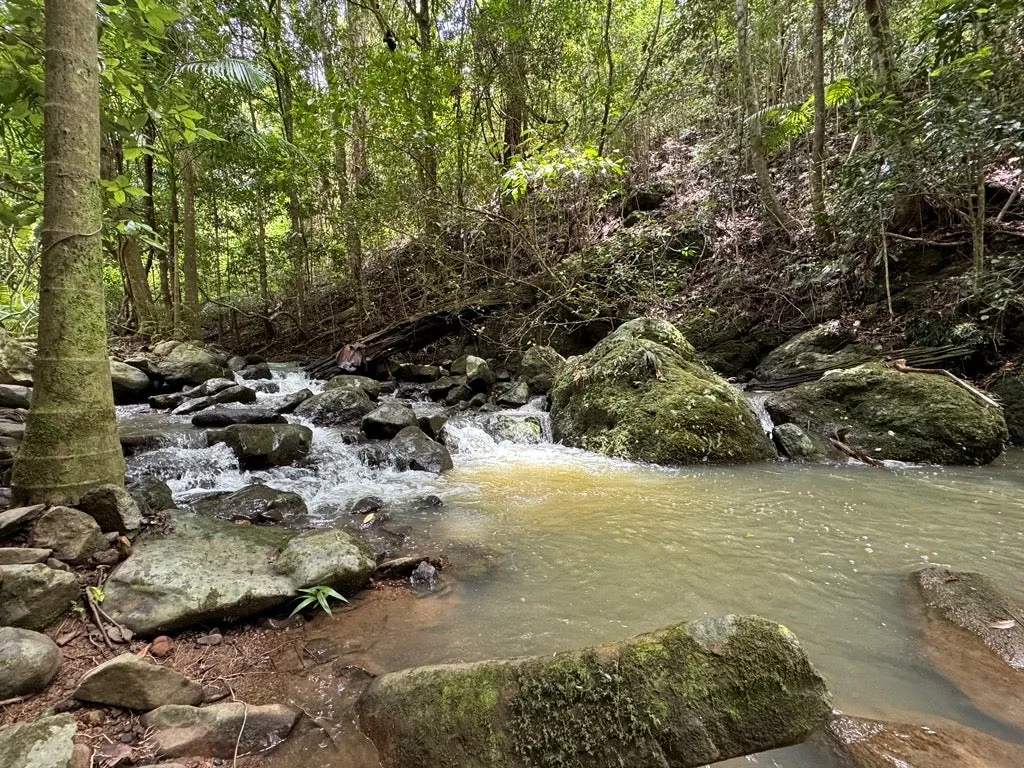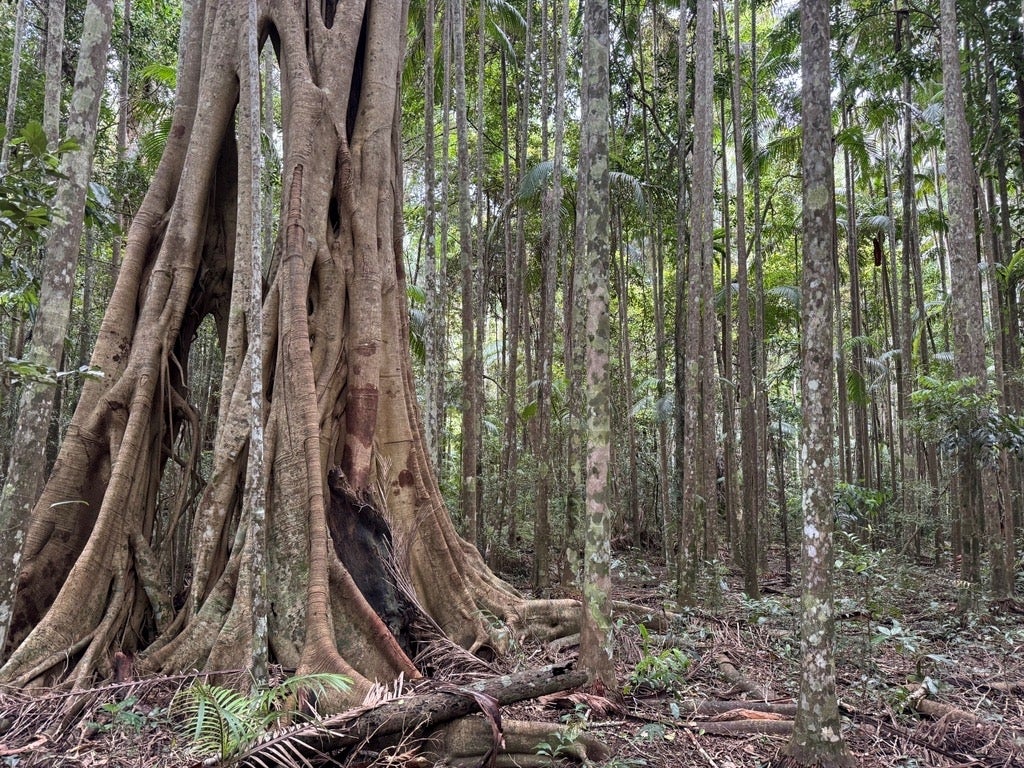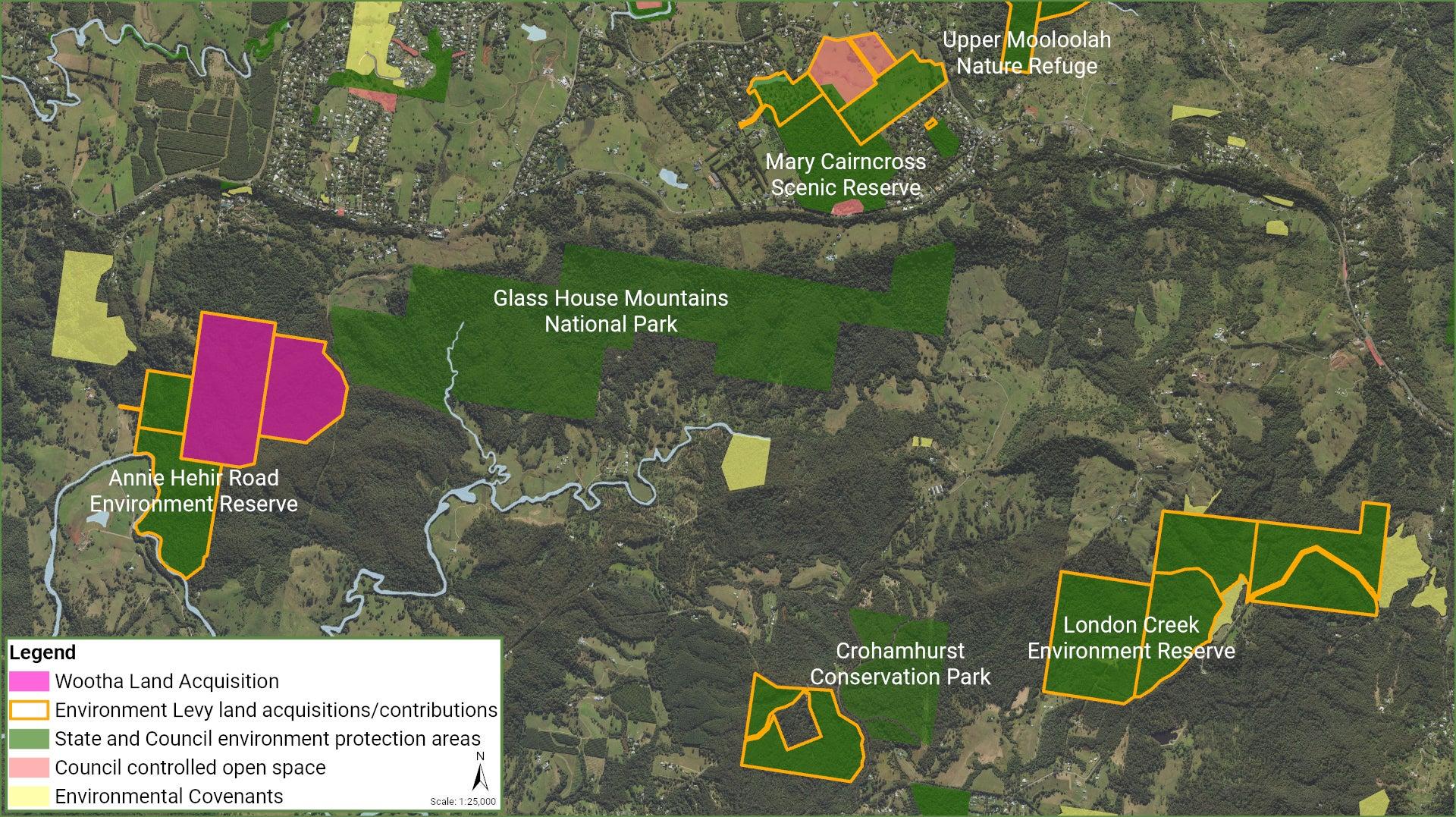108ha forest link secured in ‘stronghold’ for biodiversity
Council has purchased two land parcels for conservation, linking a key biodiversity corridor in the hinterland and protecting habitat for koalas and other threatened species.

A former native timber harvesting site that serves as a key biodiversity corridor and a haven for a diverse array of threatened plants and animals, including threatened and iconic species, will now be protected.
With funds provided by ratepayers through the Environment Levy, Sunshine Coast Council has purchased two parcels of land on McCarthy Shute Rd, Wootha, about 5km south of Maleny.
The site is home to at least eight threatened plant species and habitat for seven threatened animal species, from the iconic koala and glossy black cockatoo to the lesser-known long-nosed potoroo and Maleny spiny crayfish, a critically endangered species only found in our region.
The 108 hectares of land, secured for $2 million, will significantly expand the neighbouring Annie Heir Environment Reserve, providing a protected wildlife corridor that connects with Glasshouse Mountains National Park.
This acquisition, combined with the existing conservation estate and the national park, creates a total protected habitat of 537 hectares.

Division 5 Councillor Winston Johnston said the site was formerly owned by a local mill and used for native timber harvesting.
“Some parts of the site have been disturbed by harvesting, but most areas are high-quality habitat,” Cr Johnston said.
“This purchase was a once-in-a-lifetime opportunity to protect a connection of this quality in the landscape, establishing a stronghold for biodiversity.
“This provides habitat for some of our most iconic wildlife and also locally significant and critically endangered plant species.”
Council identifies and acquires properties for conservation as it works to implement its Environment and Liveability Strategy, contributing to a sustainable future in our Sunshine Coast Biosphere.
This acquisition also contributes towards Council’s strategic biodiversity target, our region’s growing conservation estate and expanding habitat areas, identified in the Biodiversity Report 2024.
Critical link in biodiversity corridor
The site spans both deep rainforest valleys and high eucalypt ridge lines.
The valleys are home to moisture-loving vine forests, critical for threatened and locally significant plants like the Richmond birdwing butterfly vine (Pararistolochia praevenosa), stilt lily (Romnalda strobilacea), thready-barked myrtle (Gossia inophloia) and local Macadamia (Macadamia integrifolia).
On the ridges are open eucalypt forests, which provide a significant area of core koala habitat.
Environment and Liveability Portfolio Councillor Tim Burns said that when choosing where to purchase land for conservation, Council prioritised sites within strategic biodiversity corridors.
Cr Burns said these corridors were defined and mapped in the Environment and Liveability Strategy.
“Biodiversity corridors are places where it’s possible to connect the natural landscape in a network across our Biosphere.
“In connected corridors, feeding, migrating and reproducing is easier for all species: flora, fauna or fungi.
“Working towards connected corridors, fortified through conservation, is critical for healthy ecosystems and the bigger picture of our region’s biodiversity,” Cr Burns said.
“It’s clear to see how this newly purchased site, with the Annie Hehir Environment Reserve to the west, the national park to the east, and the significant Mary Cairncross Scenic Reserve close by, forms a stronghold for our native species and ecological processes.”
The $82 Environment Levy, paid through rates by every property owner in our region, enables Council to invest in a range of environmental programs and projects to deliver a healthy natural environment.
Other recent land purchases include sites in Peregian Beach (jointly funded by Council and the Queensland Government), Mount Mellum and Ilkley with a total of $3.74 million invested.
Since the early 1990s, your Environment Levy has supported the acquisition of more than 4,200 hectares of land for conservation.
You can explore all Environment Levy land acquisitions mapped on Council’s website.
Haven for threatened plants and animals
The land acquisition will protect habitat for a multitude of threatened species.
Critically endangered species include:
- scrub turpentine (Rhodamnia rubescens)
- thready-barked myrtle (Austromyrtus inophloia)
- native guava (Rhodomyrtus psidioides)
- Maleny spiny crayfish (Euastacus urospinosus).
Endangered species include:
- koala (Phascolarctos cinereus)
- greater glider (Petauroides volans).
Vulnerable species include:
- long-nosed potoroo (Potorous tridactylus)
- black-breasted button quail (Turnix melanogaster)
- cascade tree frog (Litoria pearsoniana)
- tusked frog (Adelotus brevis)
- giant barred frog (Mixophyes iteratus)
- plumed frogmouth (Podargus ocellatus plumiferus)
- glossy black cockatoo (Calyptorhynchus lathami)
- Richmond birdwing butterfly (Ornithoptera richmondia)
- Richmond birdwing butterfly vine (Pararistolochia praevenosa)
- stilt lily (Romnalda strobilacea)
- red lily pilly (Syzygium hodgkinsoniae)
- Queensland nut (Macadamia integrifolia).

